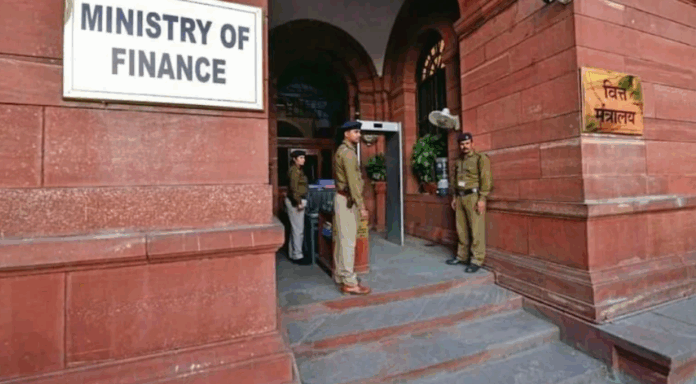India’s climate finance taxonomy aims to facilitate greater resource flow to climate-friendly technologies and activities, enabling the country to achieve the vision of being ‘net zero’ by 2070 while also ensuring long-term access to reliable and affordable energy.
The Department of Economic Affairs (DEA), under the Ministry of Finance, has prepared a draft framework to develop ‘India’s Climate Finance Taxonomy’. The draft, released for public review on Wednesday, outlines the approach, objectives, and principles that will guide the taxonomy, an official release said.
It also details the methodology for classifying activities, projects, and measures that contribute to India’s climate commitments, while also taking into account goals associated with achieving ‘Viksit Bharat’ by 2047,” it said. The DEA has sought comments on the framework till June 25, following which the official framework will be released.
India’s climate finance taxonomy aims to facilitate greater resource flow to climate-friendly technologies and activities, enabling the country to achieve the vision of being ‘net zero’ by 2070 while also ensuring long-term access to reliable and affordable energy. “The Climate Finance Taxonomy will serve as a tool to identify activities consistent with a country’s climate action goals and transition pathway,” the release said.
India’s climate ambitions are reflected through the Nationally Determined Contributions (NDCs) and the announcement of net zero emissions by 2070, the draft said. India requires around $2.5 trillion (at 2014-15 prices) to meet the NDC targets till 2030. As per NITI Aayog, the total investment required for energy transition is estimated at $250 billion per year till 2047.
Finance for adaptation action is, therefore, vital for addressing climate change impacts, building resilience and achieving India’s development goals. Preliminary estimates indicated that about $206 billion (at 2014-15 prices) would be required from 2015 to 2030 to implement adaptation actions in agriculture, forestry, fisheries, infrastructure, water resources and ecosystems, the draft said.
At present, India’s energy consumption per capita is about one-fifth of the developed countries and would need to appreciate significantly during the Amrit Kaal, a period of rapid economic growth. “Estimates suggest that the minimum level of per capita final energy requirement for India to become a developed country with an HDI of 0.9 must be in the range of 45.7 to 75 gigajoules per year, when the total final consumption of energy per capita for FY23 was 16.7 gigajoules only,” the draft noted.
Given the size of resources required for financing India’s ambitious climate action, Union Budget 2024-25 announced that the taxonomy for Climate Finance would be developed for “enhancing the availability of capital for climate adaptation and mitigation”, it said.
The framework further says that due to the complexity of the exercise and in alignment with international experience, the proposed work will be conducted in two distinct phases. “The first phase will establish the foundational framework and the approach. Following this, the second phase will involve the classification of activities, measures, and projects that are climate-supportive, along with those facilitating transition in specific sectors and industries.”
This phased approach aims to enhance clarity and transparency for investors while ensuring that the taxonomy remains aligned with India’s developmental goals and climate commitments. “Acknowledging that taxonomy must continually evolve in scope and depth to reflect the dynamic nature of the economy, it will be a living document that will be reviewed and updated from time to time,” the draft said.
Objective of the taxonomy
Broadly, the climate finance taxonomy is a tool to identify activities consistent with India’s climate action goals and transition pathway. “The objective is to facilitate greater resource flow to climate-friendly technologies and activities, enabling achievement of the country’s vision to be Net Zero by 2070 while also ensuring long-term access to reliable and affordable energy,” the draft said.
Specifically, the taxonomy will cover technologies, measures, projects and activities that are aligned to: (a) mitigation-which includes improvements in energy efficiency or reduction in emission intensity, and avoidance of GHG emissions; (b) adaptation- action that enhances resilience, including sustainable water management, ecosystem protection and restoration; and (c) support transition of hard-to-abate sectors-transition activities in line with the specific pathway for hard-to-abate industries, innovation and R&D facilitate low carbon pathways.
Design of the taxonomy
The draft further explains two broad aspects to framing a taxonomy – qualitative and quantitative. Qualitative elements can define the core principles guiding green activities and align with India’s NDCs and SDGs, while quantitative elements–such as GHG intensity reduction thresholds and sustainability performance metrics–can provide measurable targets for transparency and accountability.
“A hybrid approach that combines qualitative principles with quantitative metrics ensures that the taxonomy remains inclusive, addressing India’s diverse industrial structure and responding to new targets, regulatory changes, and policy dynamics while promoting a science-based trajectory for climate transition,” said the draft.
The classification of activities contributing towards India’s climate commitments will be into two baskets – climate supportive and climate transition. Climate-supportive activities would include either of these activities: avoiding GHG emissions, reducing emission intensity, or deploying adaptation solutions that reduce the risk of adverse impacts of climate change.
Additionally, to begin with, the following sectors will be considered: power, mobility, and buildings in the context of climate mitigation and adaptation co-benefits; agriculture, food and water security will be in the context of climate adaptation and resilience building; and addressing transition, in line with country circumstances, in hard-to-abate sectors. “Iron and Steel and Cement shall be considered at the outset,” the framework said.
Source:


